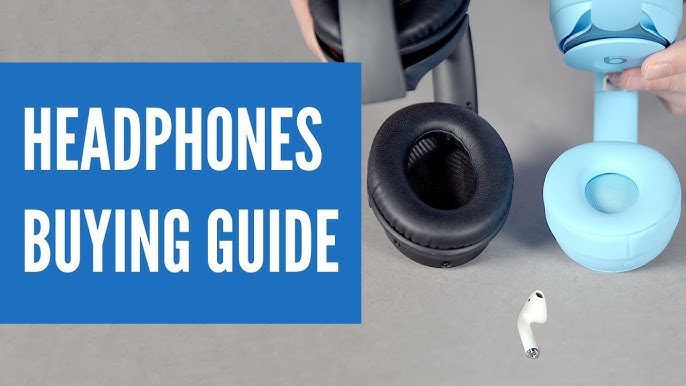No products in the cart.
News
Headphones Buying Guide: Factors to Consider
With so many different types of headphones available, choosing the right pair can feel overwhelming. This comprehensive buying guide breaks down the key factors to consider, making your headphone shopping journey a breeze. Whether you’re a music lover, a gamer, a frequent traveler, or simply looking for a convenient way to enjoy audio, this guide will help you find the perfect headphones for your needs and budget.

1. Types of Headphones
Headphones come in various styles, each with its own pros and cons:
- Over-Ear Headphones: These headphones enclose your ears completely, offering the best sound quality and noise isolation. They are ideal for home listening, studio use, and immersive gaming.
- On-Ear Headphones: These headphones rest on the outer part of your ears. They are generally more compact and portable than over-ear headphones but may offer less noise isolation.
- In-Ear Headphones (Earbuds): These headphones fit inside your ear canal, providing a secure fit and excellent portability. They are ideal for workouts, travel, and everyday use.
2. Sound Quality
Consider these factors for optimal audio:
- Sound Signature: This refers to the overall tonal balance. Some headphones emphasize bass (warm), while others prioritize a neutral or analytical sound (bright). Consider your preferred music genres.
- Frequency Response: A wider frequency response generally indicates a more accurate and detailed sound reproduction.
- Driver Technology: Different driver technologies offer distinct sound characteristics. Dynamic drivers are the most common, while planar magnetic drivers are known for their speed and accuracy but often come at a higher price.
3. Comfort and Fit
Comfort is crucial, especially for extended listening. Consider these factors:
- Headband and Earcup Design: Look for adjustable headbands, plush earcups, and lightweight designs for comfortable extended wear.
- Earcup Material: Consider materials like memory foam or leather for added comfort.
4. Connectivity
- Wired or Wireless: Wired headphones offer a reliable connection and often better sound quality, while wireless headphones provide freedom of movement and convenience.
- Bluetooth: If choosing wireless, look for the latest Bluetooth version (5.0 or higher) for a stable connection and better audio quality.
- Codecs: Advanced codecs like aptX HD and LDAC offer higher quality audio streaming (if supported by your device).
5. Noise Cancellation
- Active Noise Cancellation (ANC): ANC technology actively blocks out external noise, making it ideal for noisy environments like airplanes or busy offices.
- Passive Noise Isolation: The physical design of the headphones can also block out some noise, especially with over-ear headphones.
6. Features
- Microphone: A built-in microphone allows you to take calls or use voice assistants.
- Water Resistance: An IPX rating indicates the level of water and sweat resistance, important for workouts or outdoor use.
- Controls: Consider the placement and ease of use of controls for volume, playback, and calls.
7. Budget
Set a budget to narrow down your options. Prices can range from affordable to premium, depending on the features and brand.
Conclusion
Choosing the right headphones involves considering various factors, from sound quality and comfort to features and budget. By understanding your needs and preferences, you can find the perfect headphones to enhance your audio experience.
Do you have any questions about choosing headphones? Let us know in the comments below!
Related Articles
- How to Choose the Right Headphones for Your Needs
- Ultimate Headphones Buying Guide for Beginners
- Headphones Buying Guide for Audiophiles on a Budget
